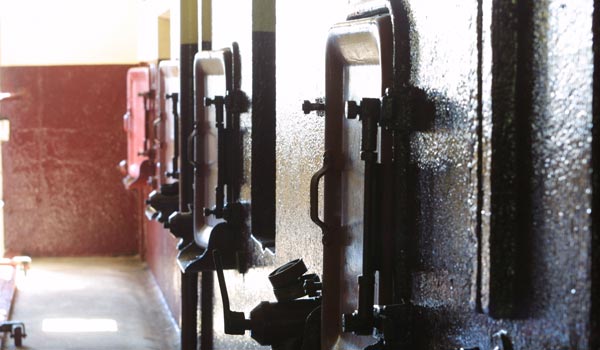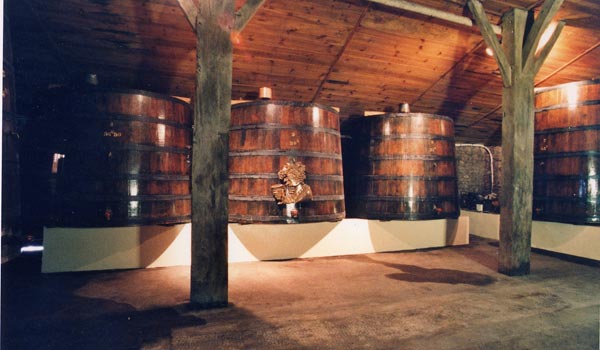We try to highlight the fruit and enhance the elegance of our wines, but not to the expense of volume, body or fleshiness.
We have thus adapted our winemaking techniques to meet this goal

Our Winemaking objective and process
Our winemaking objective and process
Winemaking plot-by-plot

To respect the variety of soils and exposures of PARENCHERE, the 32 different plots that make up the vineyard are vatted separately so as to produce 32 distinct wines.
Each one is then subjected to selection before final blending.
From the rigor of this selection depend the quality of the vintage.
Winemaking Process
Red wines
Before the start of fermentation, cold maceration (at less than 15°C) takes place in concrete tanks for over 3 to 4 days. A lot of fruit and colour will then be gently extracted.
During this period, the technique of bleeding is practiced: we run some grape juice off in each vat in order to balance the ratio of solid substances to liquid. This allows us to get more concentration for our reds to show more body and volume. The musts drawn from the bleeding are then fermenting apart to become a rosé wine: our Bordeaux Clairet.

Fermentation then follows at a temperature no greater than 28°C, to enable gentle extraction of matter and so obtain subtle, elegant tannins.
At the middle of the fermentations, we use (“microbullage”): air is circulated under the floating crust of sediment to oxygenate the must, so that all the fruit and aromas are kept in the wine without hardening the tannins.
Thanks to these techniques, the wines of PARENCHERE are good to drink since their first year of bottling while improving for 7 – 8 years for our traditional cuvee CHÂTEAU DE PARENCHERE and about 10 – 12 years for our CUVEE RAPHAËL.
White wines
Our white wines are vinified with the same philosophy.
Grapes are left to steep in their juice in stainless-steel tanks for 18 to 24 hours in a carbon dioxide atmosphere, before being pressed. This objective of this process is to extract as much aroma as possible, while imparting a certain amount of roundness to the must. The juice is then kept cool and left for 8 days to settle before being racked. Alcoholic fermentation then takes place in tanks at very moderate temperatures (between 16°C et 18°C) in order to preserve all the aromas.
The wines are aged on fine lees for 3 months, then blended and bottled with a relatively high natural carbon dioxide content, which makes the wine fresher.





